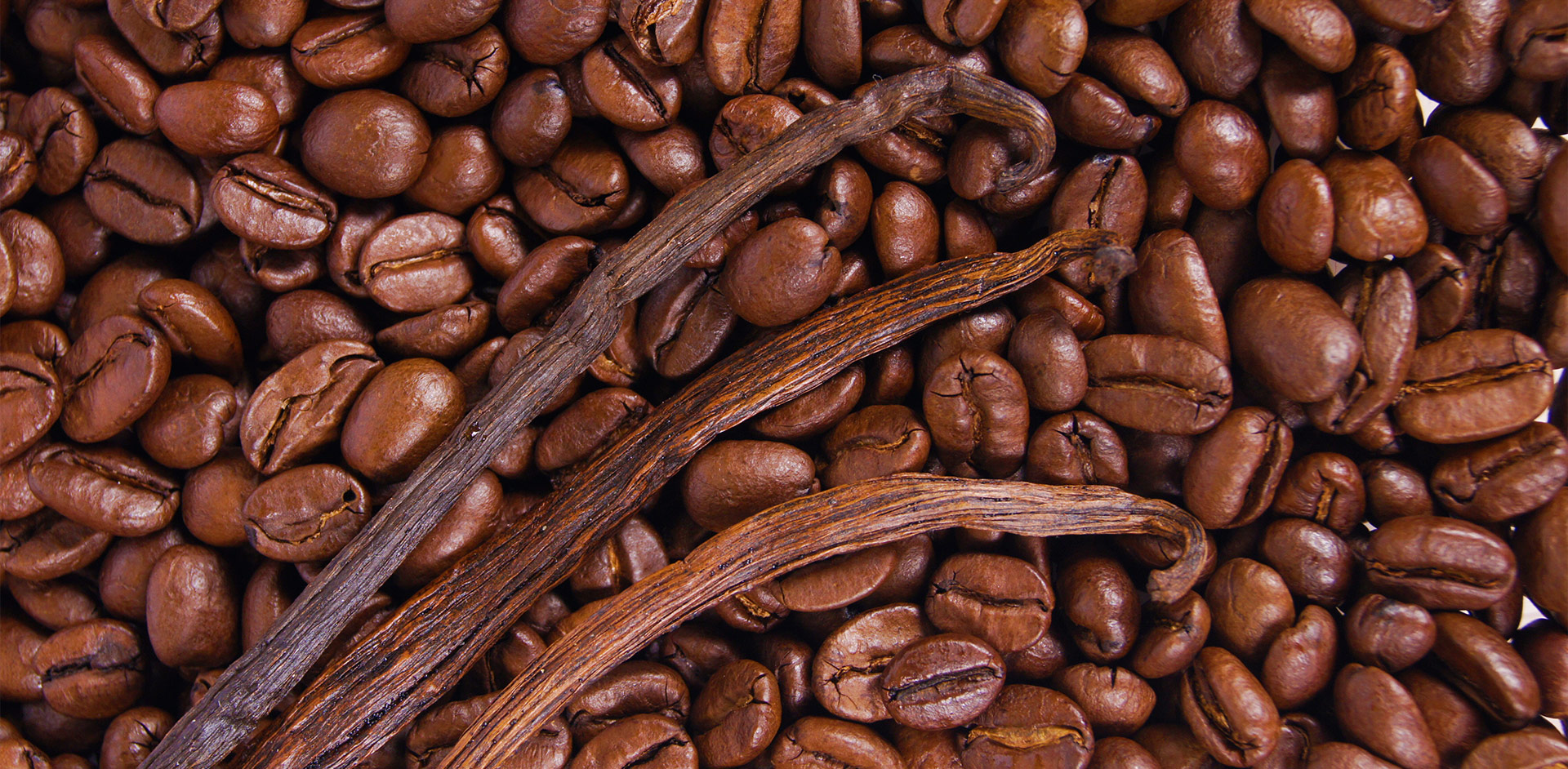When Coffee Inspires Vanilla
Coffee has come a long way from the diner cups of old to today’s high-quality blends.
Can vanilla make a similar journey? Ask any of our experts, and they will respond with a resounding yes.
Coffee is one of the most popular food & beverage items in the world. Virtually every culture has its own coffee preference, and vast varieties of coffee products and flavors are sold to consumers and businesses all over the world. Vanilla is not nearly as common or accessible as coffee – mostly due to pricing differences – yet it is universally known as the world’s most beloved flavor.
In terms of flavor popularity alone, vanilla and coffee are very similar. Yet the similarities between coffee and vanilla don’t end there. A deep dive uncovers many other resemblances. For starters, let’s talk about flavor development. Coffee and vanilla flavors are very different, but they are obtained in a similar manner. During the green harvest stage, both coffee and vanilla don’t have any flavor. Their flavors and aromas develop and mature during the post-harvest processing stage. With coffee, flavor blossoms during the relatively short roasting stage. Vanilla flavor, on the other hand, is generated during a curing stage that lasts several months.

Creating post-harvest magic
Roasting and curing are both heat-based post-harvest methods that fulfill the flavor and aroma potential of coffee and vanilla bean molecules. Both coffee and vanilla undergo a post-harvest stage in which flavors are formed from flavor building block molecules. Coffee roasting is performed after previous post-harvest stages such as fermentation and drying, and flavor is formed mostly due to temperature driven chemical reactions. In contrast, vanilla curing is performed immediately after picking, and flavors are formed gradually over time via enzymatic reactions as part of the beans’ natural metabolism.

Soil, temperature and genetics affect the flavor and aroma potential of the coffee bean, yet it is known that flavor alteration is achieved by “playing” with the high-temperature roasting process and impacting the molecules by changing certain parameters such as roasting time or temperature. This means that the same batch of green coffee beans can end up as completely different coffee products with distinct flavor profiles. Today, as we select our favorite coffee beans or special-flavored ground coffee, we take this for granted. But in fact, it is a truly spectacular post-harvest process that required ingenuity back in the day.
Can vanilla resemble coffee in terms of controlled and pre-determined flavor and aroma alteration? Vanilla Vida decided to find out – and the answer is a resounding yes. Led by our CTO Raz Krizevski (PhD), our expert team uses data-driven technology and advanced curing methods to revolutionize the post-harvest vanilla development stage. By manipulating a wide variety of parameters – time and temperature are only two of them – the Vanilla Vida team is able to create distinct flavors from the same vanilla bean batch.

Much like coffee, climate and soil play a very large role in determining vanilla bean flavor. But coffee broke the threshold and used the post-harvest stage to take flavor and aroma to new heights. Thanks to our unique curing methods, Vanilla Vida is now able to do the same with vanilla. In this sense, one can say that today’s coffee industry has inspired us to take vanilla to the next level.
What does the next level look like, you ask? Well, first off, it’s about creating precision-based flavors for different markets. With our curing technology, we are able to create natural vanilla that meet specific geographic palates. For example, we’re creating sweeter vanilla profiles for the North American market, and developing vanilla with a smokier essence for the French market. If this sounds like a revolution, that’s because it is.
The many flavors of inspiration
Coffee inspiration doesn’t end there, of course. Coffee was once perceived as a basic ingredient with consistent flavor. Quality was not something people fussed over when they drank their morning coffee. Yet over the past few decades, the global movement known as Third Wave Coffee consistently uses high-quality beans and roasting processes to bring the best possible coffee products to consumers, based on their individual preferences. At Vanilla Vida, we hope to kickstart a similar revolution with vanilla. For starters, we’re hoping our technology and methods will help make natural vanilla more accessible worldwide, in place of commonly used artificial vanilla.
Third Wave Coffee is also a very socially responsible and geographically transparent movement. Today’s gourmet coffee consumers know exactly where their coffee originated from, and can trace all the steps from crop-to-cup. We’re looking to operate in a similar manner. We work with vanilla farmers worldwide in order to learn from them and include them in our innovative process. We envision cutting-edge vanilla products that provide consumers with data such as region and farm of origin. When it comes to personal vanilla preference, this information is very important.
